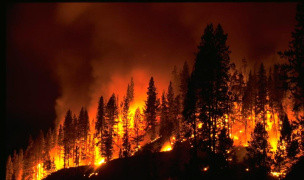 20 Terms
20 TermsHome > Industry/Domain > Earth science > Physical oceanography
Physical oceanography
The scientific study of the physical conditions and processes related to the motions and physical properties of ocean currents and waters.
Industry: Earth science
Add a new termContributors in Physical oceanography
Physical oceanography
East Indian Current
Earth science; Physical oceanography
A seasonal and northward flowing current found in the western part of the Bay of Bengal from about January until October. The weak and variable currents found early in the year strengthen with the ...
Sea surface slick
Earth science; Physical oceanography
A sea surface film in which organic accumulation exceeds a threshold such that it becomes visible as a slick, i.e. a sea surface feature that appears as smooth grey spots or stripes in contrast to ...
Ridging
Earth science; Physical oceanography
A sea ice process defined by the WMO as: The pressure process by which sea ice is forced in ridges. A ridge is a line or wall of broken ice forced up by pressure. It may be fresh or weathered. The ...
Asian Sea International Acoustics Experiment (ASIAEx)
Earth science; Physical oceanography
A scientific collaboration between the U.S., China, Korea, Japan, Taiwan, Russia and Singapore. The ASIAEx major field experiments began in 2000, one focusing on acoustic bottom reverberation and the ...
Rafting
Earth science; Physical oceanography
A sea ice process defined by the WMO as: Pressure process whereby one piece of ice overrides another. Most common in new ice and young ice. 354 A type called "finger rafting" involves the formation ...
Fracture
Earth science; Physical oceanography
A sea ice term defined by the WMO as: Any break or rupture through very close pack ice, compact pack ice, consolidated pack ice, fast ice, or a single floe resulting from deformation processes. ...
Inland sea
Earth science; Physical oceanography
A sea surrounded by land and connected to the open ocean by one or more narrow straits. Examples include the Baltic Sea, the Red Sea, and the Black Sea. Compare to epeiric sea and epicontinental sea.
Featured blossaries
farooq92
0
Terms
47
Blossaries
3
Followers
Top 10 University in Beijing, China
 10 Terms
10 Terms

